Saturday 23 August 1941
Hitler, in fact, feels that there will be plenty of time to move on Moscow later. He says:
the objections that time will be lost and the offensive on Moscow might be undertaken too late, or that the armored units might no longer be technically able to fulfill their mission, are not valid.Guderian and Halder return to the front with clear orders to push Guderian's Panzer Group 2 south to link up with Army Group South and encircle the Soviet troops at Kyiv. This is a bitter blow for Guderian, Halder, and von Bock, who all feel that a quick attack on Moscow will be decisive.
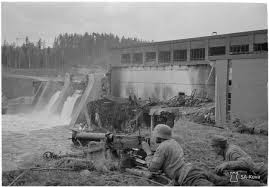 |
| Finnish Maxim machine gun team in a position defending a river crossing, 23 August 1941 (SA-Kuva). |
A little to the southwest, the Soviet 115th and 123rd Rifle Divisions prepare to attack advance Finnish detachments of the Finnish Light Brigade T that have crossed the Vuoksi river. Finnish Group F, struggling forward toward Ukhta (Kalevala) on Ozero Sredneye Kuyto Lake, take another small village, Korpiyarvi, northwest of Ukhta. The Soviets are putting up fierce resistance, and the numerous small lakes and marshes in the area favor the defense.
Finnish 6th Division of 36 Corps have trapped some Soviet troops at Nurmi Lake and Nurmi Mountain, and the Soviet troops there are in desperate straits. The Finns intercept a Russian radio message during the night that claims the troops are in "complete encirclement." The Finns, though, also are very strained, and today use the last of their own reserves to extend its line northward to prevent the Soviets from escaping. The Soviets, though, discover a logging road which is not on any maps north of the lake along which they begin to withdraw. The battle becomes a race between the retreating Soviets and the extension of the Finnish troops to the north through rough terrain.
In the Army Group North sector, Marshal Voroshilov, in command at Leningrad, assigns 48th Army to the Northern Front and gives it responsibility for defending the approaches to Leningrad. General Alexander Novikov becomes his air commander.
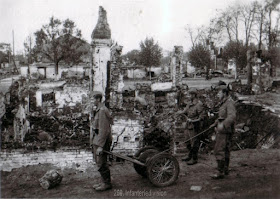 |
| German soldiers in the ruins of Gomel, 23 August 1941. |
In the Army Group South sector, the Romanian 4th Army is bogged down in front of Odessa. The Soviet Black Sea Fleet has been instrumental in providing artillery support. Both sides have taken heavy casualties, but the Romanians have an easier time bringing in reinforcements than the Soviets, who can only be supplied by sea.
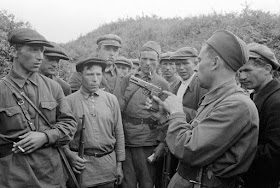 |
| A Soviet Army soldier teaches Russian partisans how to operate a Browning Hi-Power handgun. Near Smolensk, Russia, Soviet Union. 23 August 1941. |
Later in the afternoon, six Luftwaffe Heinkel He-111H-5s of KG 26 attempt to intercept a reported convoy in the North Sea. One crashes into the sea after being hit by destroyer fire. The five crewman take to a dinghy and are taken prisoner by the British.
Battle of the Baltic: The Germans are pressing in on the port of Tallinn (Reval), Estonia, so Soviet cruiser Kirov and destroyers Gordy, Leningrad, and Minsk provide supporting gunfire.
Soviet minesweeper T-204 Fugas hits a mine and sinks west of Kronstadt.
U-564 (KrvKpt. Reinhard Suhren), on its second patrol out of Brest, sank two ships of Convoy OG-71 west of Portugal on the 22nd, and today it adds a third. Suhren torpedoes and sinks 900-ton British corvette HMS Zinnia (K-98, Lt Cdr C. G. Cuthbertson DSO RNR). There are 49 deaths and 36 survivors.
U-564 also damages 2129-ton British freighter Spind from Convoy OG-71. U-552 (ObltzS Topp) then tries to finish off Spind with two torpedoes and then twenty rounds from its 88mm deck gun. The crew of Spind abandons ship but it remains afloat, blazing. Later Royal Navy destroyer Boreas scuttles Spind.
U-201 (Kptlt. Adalbert Schnee), on its third patrol out of Brest, torpedoes and sinks two ships in Convoy OG-71:
- 787-ton British freighter Stork (19 deaths)
- 1974-ton British freighter Aldergrove (one death).
Finnish 1847-ton freighter Cisil hits a German mine and sinks off Kolberg, Germany.
The RAF bombs 4845-ton Finnish freighter Wisa in the Ems estuary with an aerial mine. Wisa is towed into Emden.
Royal Navy minesweeper Speedwell collides with 1951-ton British freighter St. Julian in the North Sea, damaging both ships. However, the destroyer's damage is minor.
Operations EGV1 and EGV2, whose objectives are to provide convoy protection in northern waters near Murmansk and Archangel, begin when Force M departs from Scapa Flow. It is led by heavy cruisers Devonshire and Suffolk.
German raider Orion (FKpt Weyher) arrives in the Gironde Estuary escorted by U-75 and U-205, completing its 510-day raiding mission by docking at Bordeaux. During that time, Orion sank 9 1/2 ships of 57,744 tons on its own and 7 ships in concert with raider "Komet." Perhaps just as importantly, Orion and the other raiders have spread fear and panic in the Pacific and Indian Ocean areas that otherwise the Germans cannot reach.
The Royal Navy receives reports of a German raider south of Bermuda, so it dispatches Canadian AMC Prince David to search. In addition, AMC Circassia is dispatched from Freetown to search for it. The reports may have referred to Orion, which makes port.
Royal Navy heavy cruiser Devonshire leads a group of minelayers to lay minefield SN-70A east of Iceland.
US Navy battleship USS New Mexico returns to Hampton Roads from a Neutrality Patrol.
Convoy OS-4 departs from Liverpool bound for Freetown.
Royal Navy submarine HMS P39 is launched.
Canadian Corvette HMCS Calgary is launched in Sorel, Province of Quebec.
US Navy destroyer USS Emmons is launched.
U-155 (Kapitänleutnant Adolf C. Piening) is commissioned, U-629, U-630, and U-755 are laid down.
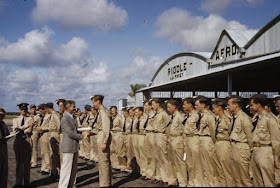 |
| "The presentation of diplomas by Mr Paul Riddle to Royal Air Force cadets of the first course, Class 42-B, at Embry-Riddle Company. The cadets wear the white flash identifying aircrew in their caps. Shirts and trousers are USAAC issue." Carlstrom Field, Arcadia, Florida, August 1941 (© IWM (TR 80)). |
- 413-ton freighter Fratelli Garre 12 miles northwest of Sirte
- 395-ton freighter Francesco Garre 1 miles north of Sirte
An RAF Bristol Blenheim bombs and sinks 582-ton Italian freighter Constanza south of Lampedusa.
Italian aircraft bomb and sink Royal Navy destroyer Fearless south of Sardinia.
Italian aircraft bomb and damage Royal Navy light cruiser Manchester south of Sardinia.
Due to sightings of Italian ships sailing to Bardia, the Royal Navy dispatches destroyers Jackal and Napier to intercept them. However, no contact is made because the Italian ships change course back to the north.
Italian minelayers Aspromonte and Reggio lay minefield SN-44 in the Sicilian Strait. This is a massive minefield of 1125 mines.
Having heard of the departure of Royal Navy Force H from Gibraltar (Operation Mincemeat), the Italian fleet goes to sea. Led by battleships Littorio and Veneto based at Taranto and heavy cruisers Bolzano, Gorizia, Trento, and Trieste, along with five destroyers from Trapani and three light cruisers from Palermo, the fleet patrols off the western Italian coast.
There is a heavy air raid on Malta after dark. Corrodino, the area northeast of Ta Silch, Safi, and St. George's Barracks are hit with incendiary bombs. In addition, five incendiaries fall on the dockyard area, but they are put out quickly.
The RAF at Malta sends 10 Wellingtons to bomb the area northwest of Tripoli, while 5 Blenheim bombers attack a convoy.
 |
| "An Air Raid Precautions Warden reports for duty to the Chief ARP Warden, Mr Davies, at his local ARP post in Springfield, Essex." August 1941 (© IWM (D 4263)). |
...all Frenchmen taken into custody, either by the German authorities in France or on orders originating with them, will be regarded as hostages. Should any further criminal action occur, hostages will be shot in a number corresponding to the seriousness of that action.This practice of taking hostages from the civilian population and executing them is a common tactic by the Germans during World War II and is considered a war crime.
Partisans: Italian troops of the 2nd Army begin relieving German troops on garrison duty in the former Yugoslavia. The German troops' next assignment is the Russian Front, where replacements are badly needed.
US/Italian Relations: US authorities seize a handful of Italian freighters at Norfolk, Virginia and New York City:
- 5932-ton Laconia in Norfolk (becomes Panamian Elwood)
- 6131-ton Alberta in NYC (becomes Panamanian Ballot)
- 5441-ton Aussa in NYC (becomes Panamanian Africander)
- 5060-ton Guidnia in Norfolk (becomes Panamanian Plaudit)
- 6140-ton Pietro Campanella in Norfolk (becomes Panamanian Equipoise)
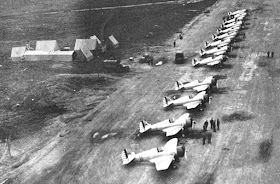 |
| P-36 Hawks of the 18th Pursuit Squadron lined up at Elmendorf Field, Alaska, August 1941 (US Army Air Forces USGOV-PD). |
Nomura returns to see Hull again later in the day and tells him that his government wishes the two countries' heads of state to have a summit meeting before 15 October 1941. He also asks that the US stop shipping supplies to Russia and delay a proposed Allies conference at Moscow. Hull is noncommittal but promises to tell President Roosevelt about the requests.
German/Japanese Relations: The Japanese are keeping their negotiations with the Americans secret and have been lying to the Germans about what they are doing. German Foreign Minister Ribbentrop meets with his Japanese Ambassador Oshima in Berlin and admits that the war in the USSR may last into 1942 - a very rare admission. When communicated to Tokyo, this reinforces the hotly contested decision not to invade the Soviet Union.
Canadian Military: Canadian Prime Minister William Lyon Mackenzie King addresses 10,000 Canadian troops in Aldershot, England. He receives a mixed reception, as the soldiers are tired of waiting for action. Some boo and hiss his speech.
Soviet Military: Soviet Transcaucasus Military District is redesignated Transcaucasus Front, commanded by General Kozlov. He has four armies - 44th Army, 45th Army, 46th Army, and 47th Army - and it is given responsibility for the entire coastal region from Turkey to Tuapse.
 |
| Japanese aircraft carrier Shokaku, which enters service on 23 August 1941. |
The IJN begins converting 7397-ton freighter Awata Maru into an auxiliary cruiser at Mitsubishi Heavy Industries in Kobe, Japan.
The IJN begins converting 5181-ton freighter Hide Maru into an ammunition ship at Osaka Iron Works.
<
Vichy French Government: Premier Petain authorizes courts to impose the death penalty for offenses deemed to be by terrorists.
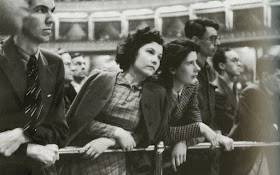 |
| Prommers at Last Night of the Proms, 23 August 1941. |
American Homefront: "Daddy" by Swing and Sway with Sammy Kaye with the Kaye Choir marks its eighth non-consecutive week at the top of the Billboard singles chart.
The Ryder Cup begins at Oakland Hills Country Club. Bobby Jones captains the Challengers and Walter Hagen is the U.S. Ryder Cup Captain. The US team defeats the British 8 1/2 to 6 1/2 on 24 August. Over 20,000 people attend. Jones wins his match against Henry Picard, 2 and 1.
Future History: Margaret Julia Leon is born in Ringwood, Hampshire, United Kingdom. As Julia Lockwood (her mother's last name), she becomes a child actress, first appearing in "Hungry Hill" (uncredited) and turns to television in the 1950s, appearing in shows such as "The Royalty" (1956-58), "Don't Tell Father" (1959), and "Birds on the Wing" (1971). Julia continues to act occasionally but mostly retired in 1976.
August 1941
August 2, 1941: Uman Encirclement Closes
August 3, 1941: Bishop von Galen Denounces Euthanasia
August 4, 1941: Hitler at the Front
August 5, 1941: Soviets Surrender at Smolensk
August 6, 1941: U-Boats in the Arctic
August 7, 1941: Soviets Bomb Berlin
August 8, 1941: Uman Pocket Captured
August 9, 1941: Atlantic Conference at Placentia Bay
August 10, 1941: Soviet Bombers Mauled Over Berlin
August 11, 1941: Rita Hayworth in Life
August 12, 1941: Atlantic Charter Announced
August 13, 1941: The Soybean Car
August 14, 1941: The Anders Army Formed
August 15, 1941: Himmler at Minsk
August 16, 1941: Stalin's Order No. 270
August 17, 1941: Germans in Novgorod
August 18, 1941: Lili Marleen
August 19, 1941: Convoy OG-71 Destruction
August 20, 1941: Siege of Leningrad Begins
August 21, 1941: Stalin Enraged
August 22, 1941: Germans Take Cherkassy
August 23, 1941: Go to Kiev
August 24, 1941: Finns Surround Viipuri
August 25, 1941: Iran Invaded
August 26, 1941: The Bridge Over the Desna
August 27, 1941: Soviets Evacuate Tallinn
August 28, 1941: Evacuating Soviets Savaged
August 29, 1941: Finns take Viipuri
August 30, 1941: Operation Acid
August 31, 1941: Mannerheim Says No
2020
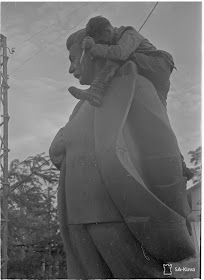
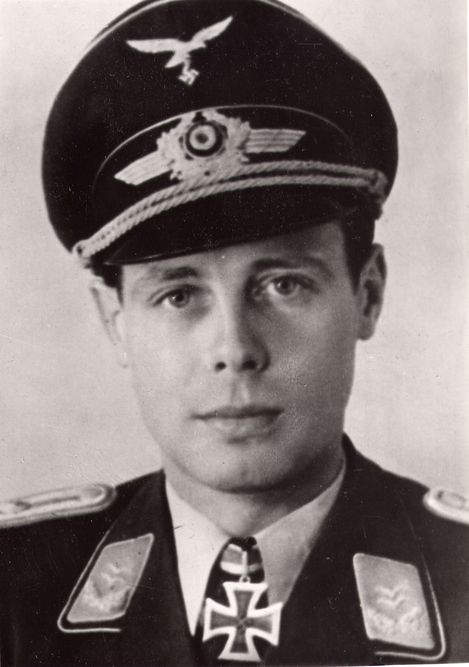
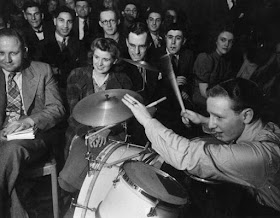
No comments:
Post a Comment